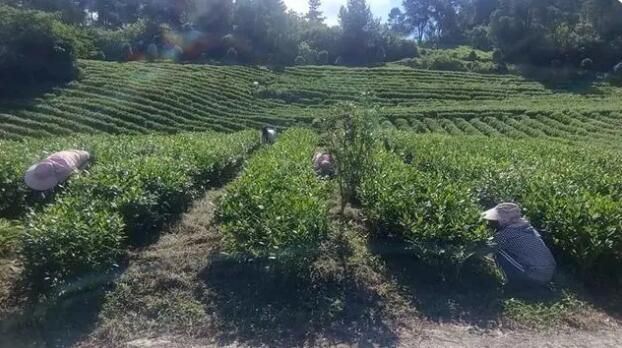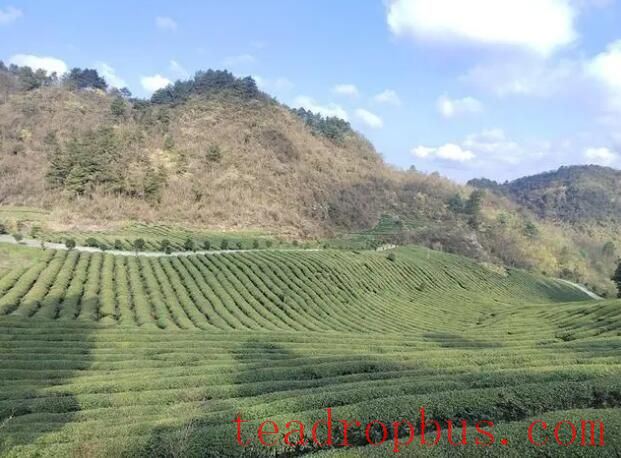“Pruning Tea trees involves leveling the canopy, removing weak branches while retaining strong ones, and clearing around the base to improve ventilation and light penetration. When fertilizing, trenches should be dug above the tea plants, with organic fertilizers being the primary choice. After fertilizing, cover the area with soil promptly. This helps the tea plants accumulate nutrients safely over winter and reduces pest and disease issues in the following year.” As Mu Chenghong explained, he demonstrated these garden management techniques to the tea farmers.
The golden autumn season brings wealth from the fertile land; after the rain, the tea gardens are a verdant green, layer upon layer, like a poem shrouded in mist. It is a critical time for garden management, and at the tea plantation run by Guizhou Lin Sen Modern Agricultural Development Co., Ltd. in Jiuchang Village, Gaizhai Town, Kaiyang County, tea farmers are bustling about, pruning, weeding, loosening the soil, and fertilizing the tea plants… laying a solid foundation for increased production and income in the coming year.

Villagers are weeding.
As the saying goes, “three parts planting, seven parts management.” Good tea is not only grown but also managed. To enhance quality and efficiency and strengthen the tea industry chain, Gaizhai Town has seized the agricultural opportunities, strengthened management, and adopted a focused approach to comprehensive care. They have provided technical guidance on Autumn Tea garden management to ensure that every section of the garden is well cared for.
According to Mu Chenghong, the manager of the plantation, after growing and being harvested through the spring and summer seasons, tea trees lose stored nutrients and soil fertility. Strengthening autumn management of tea gardens is crucial for improving the tree's resistance, enhancing its vigor, and increasing both the yield and quality of tea. It directly affects the yield and quality of Spring Tea in the coming year.
Since the establishment of the tea plantation in the village, many local villagers have been able to increase their income through employment. Fu Wanping, a resident of Ganshan Group in Jiuchang Village, is a regular worker at the tea plantation. “Our family's land has been leased to the company for tea cultivation. My wife and I work at the tea garden when we have free time, managing the tea trees during the autumn and winter and picking tea leaves in the spring and summer. We have work all year round and can earn about 50,000 yuan annually,” said villager Fu Wanping.

A corner of the Gaizhai Town tea plantation.
Many villagers, like Fu Wanping, have benefited from employment at the plantation. According to Lan Yi, head of the Agricultural Center in Gaizhai Town, “To promote the development of the tea industry, in recent years, Gaizhai Town has actively introduced two tea companies and developed 7,300 mu (approx. 487 hectares) of tea plantations. The tea gardens are primarily managed manually, requiring annual activities such as pruning, fertilization, weeding, and picking. These efforts have created job opportunities and increased income for more than 1,000 people living nearby.”
It is reported that the thriving tea industry has become a powerful driver for rural revitalization in Gaizhai Town. Kaiyang County's Gaizhai Town has effectively linked brand building and large-scale production in the tea industry, actively establishing an integrated development model that encompasses planting, production, and processing. The modern agricultural park for tea is starting to show significant results.
(Photos and text by Feng Chengli)